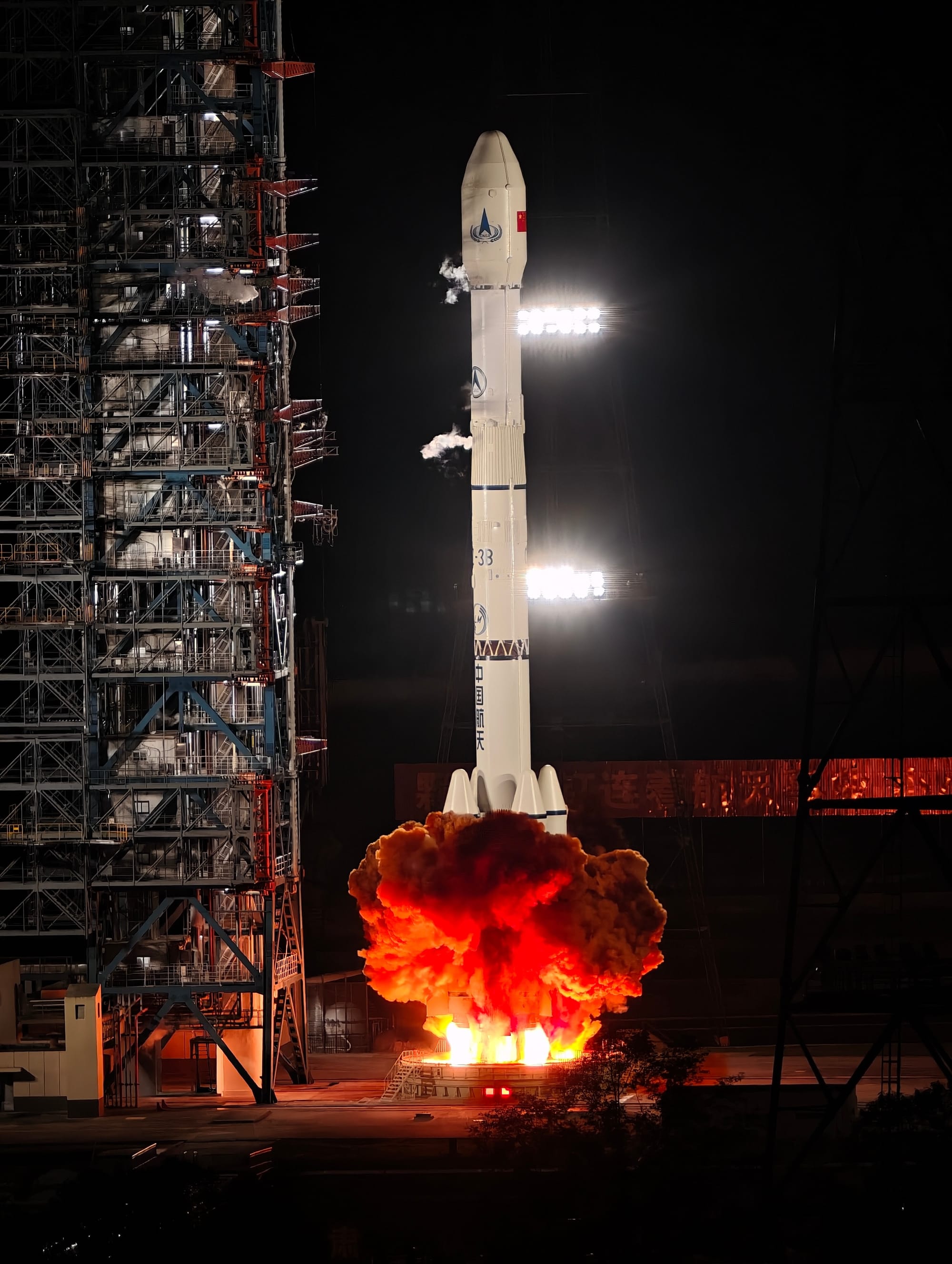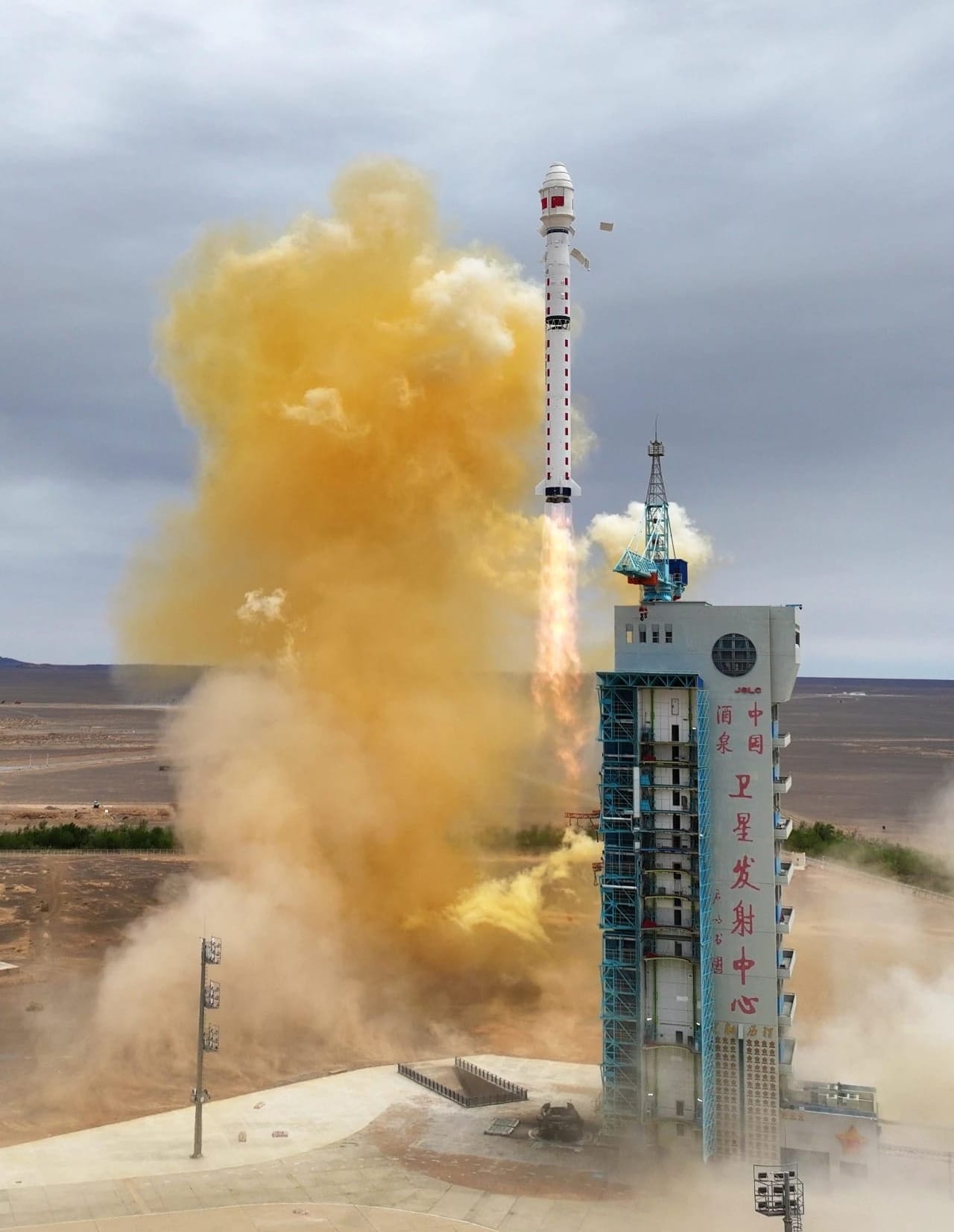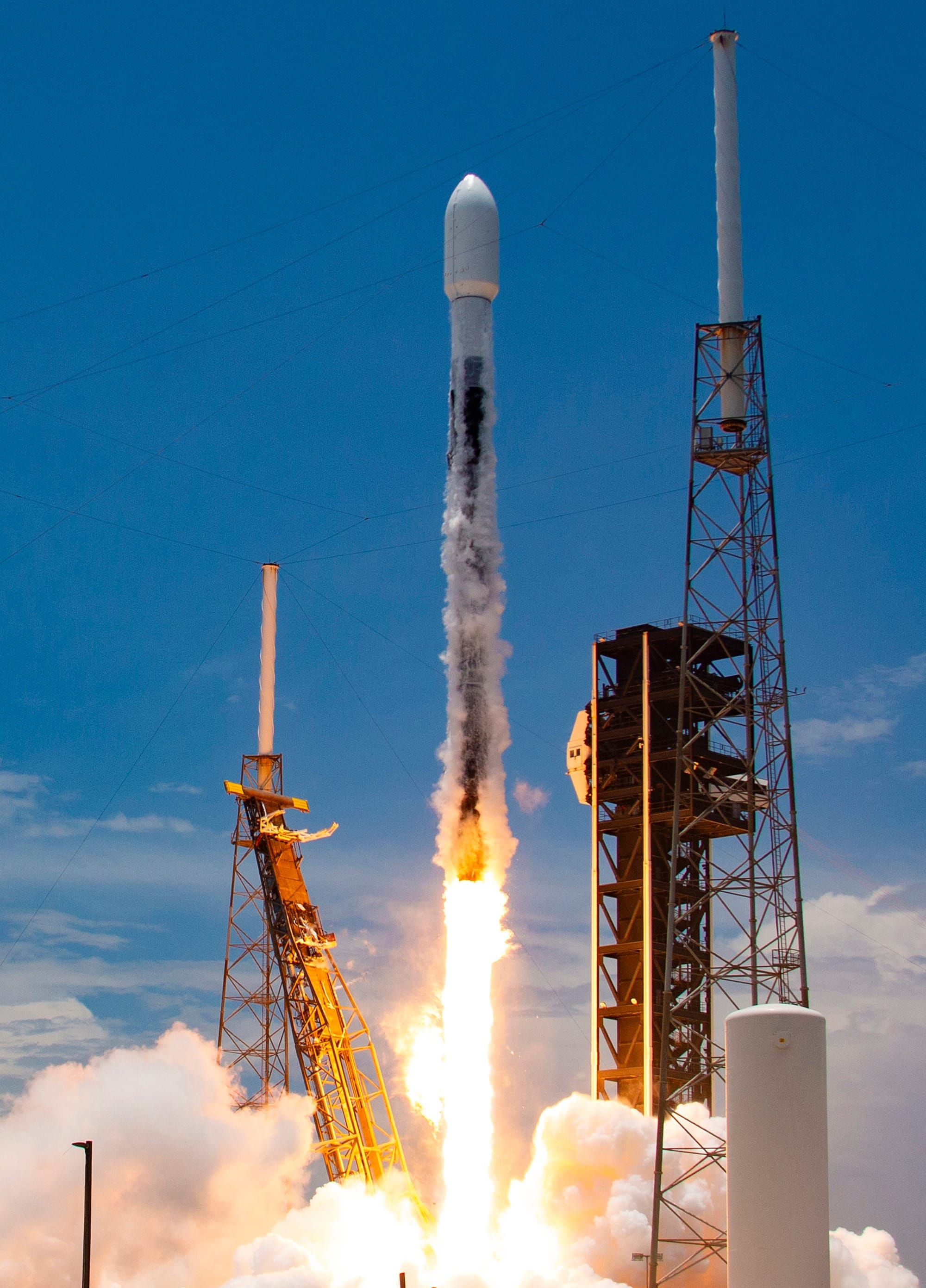Table of Contents
Welcome back to Weekly Dose of Space! This week saw eight launches taking place, including one flying into deep space. News from the week has more details on NASA's budget cuts and SpaceX's Starship plans. As always, we'll also look ahead to what the worldwide launch schedule might look like next week.
Launches This Week
May 27th - Falcon 9 with Starlink Group 17-1
Twenty-four Starlink satellites were delivered to low Earth orbit by a Falcon 9 flying from Space Launch Complex 4E, in California. Supporting this mission was booster B1082 on its thirteenth flight, and landing downrange on the drone ship 'Of Course I Still Love You'.
May 27th - Starship-Super Heavy for its ninth flight test
SpaceX launched its in-development fully reusable Starship-Super Heavy launch vehicle on its ninth flight test, using Ship 35 and Booster 14, from its South Texas launch site. During the flight test, Booster 14 exploded very shortly into its landing burn and Ship 35 lost control following the shutdown of its engines.

May 28th - Falcon 9 with Starlink Group 10-32
From Launch Complex 39A, in Florida, another Falcon 9 sent twenty-seven Starlink satellites to low Earth orbit. Booster B1080, flying for the nineteenth time, supported this mission, landing downrange on the drone ship 'Just Read The Instructions' afterwards.
May 28th - Long March 3B/E with Tianwen-2
China's Tianwen-2 asteroid sample return mission Tianwen-2 blasted off from the Xichang Satellite Launch Center atop of a Long March 3B/E, flying out of the Earth-Moon system. Tianwen-2 is journeying to asteroid 2016HO3/469219 Kamoʻoalewa to gather between 200 and 1,000 grams of samples.

May 29th - Long March 4B with Shijian-26
A Long March 4B lifted off from the Jiuquan Satellite Launch Center carrying the Shijian-26 spacecraft to a sun-synchronous orbit. Shijian-26 is expected to serve land census and environmental monitoring efforts to inform agricultural policy.

May 30th - Falcon 9 with GPS-III SV08
SpaceX's Falcon 9 flew to medium Earth orbit from Space Launch Complex 40, in Florida, carrying the GPS-III SV08 satellite for the U.S. military. In support of this mission was booster B1092, flying for the fourth time, with a landing on the drone ship 'A Shortfall of Gravitas' downrange.

May 31st - New Shepard for NS-32
Blue Origin's New Shepard rocket conducted another suborbital tourist mission from the company's West Texas launch site. Onboard were Aymette Medina Jorge, Dr. Gretchen Green, Jaime Alemán, Jesse Williams, Mark Rocket, and Paul Jeris.
🔁 NS-32 Replay: Booster Touchdown! pic.twitter.com/o0RjbA3yCg
— Blue Origin (@blueorigin) May 31, 2025
New Shepard touching down in West Texas on May 31st, via Blue Origin on Twitter.
May 31st - Falcon 9 with Starlink Group 11-18
Another Falcon 9 launched a batch of twenty-seven Starlink satellites to low Earth orbit from Space Launch Complex 4E. Booster B1071 supported this mission for its twenty-fifth flight, with a landing on the drone ship 'Of Course I Still Love You' downrange.
In Other Space News
Isaacman's NASA Administrator bid withdrawn
In a highly surprising move, the Trump White House announced on May 31st that Jared Isaacman would no longer be moving forward to become NASA's next Administrator. It's unclear why the White House is no longer moving forward with Jared Isaacman, but a spokesperson stated:
“The Administrator of NASA will help lead humanity into space and execute President Trump’s bold mission of planting the American flag on the planet Mars,” – “It’s essential that the next leader of NASA is in complete alignment with President Trump’s America First agenda and a replacement will be announced directly by President Trump soon.”
The withdrawal comes a week after the U.S. Senate planned to vote on whether Jared Isaacman would be the NASA Administrator.
NASA gutted under new budget
NASA released details on its fiscal year 2026 budget on May 30th, confirming details on what the Trump Administration would like to cut, first disclosed in a budget overview. With the budget proposal, six billion dollars in agency funding would be lost, along with the layoff of thousands of employees.
Jeff Foust for SpaceNews has a solid overview of the cuts, with some extracts as follows:
"[Cuts] include the Mars Sample Return (MSR) program, which the skinny budget highlighted for cancellation, and Landsat Next, a future Earth observation program that was the other science mission mentioned in the skinny budget. NASA will instead work to restructure Landsat Next in unspecified ways through a separate program, Sustainable Land Imaging."
"In Earth science, the budget proposes to cancel missions in the Earth System Observatory line of missions recommended by the most recent decadal survey other than GRACE-Continuity, the latest in a series of missions to monitor the planet’s gravity field."
"In addition to MSR, the budget proposes to end funding for the Mars Odyssey and MAVEN missions orbiting Mars. It would also cancel NASA’s support for the European Space Agency’s Rosalind Franklin Mars rover mission, where NASA agreed to provide thrusters, radioisotope heating units and a launch vehicle."
"The budget would terminate many ongoing astrophysics missions, including the Chandra X-Ray Observatory and Fermi. It would cancel the Astrophysics Probe program, which was studying concepts for a billion-dollar space telescope, as well as smaller Explorer-class missions in development such as the Compton Spectrometer and Imager as well as Ultraviolet Explorer."
If you have the time, please do read the full SpaceNews article, or the NASA budget proposal itself.
The Proxima Report team is currently short on time to cover the budget properly, a dedicated article on the budget is in the early stages of writing.
SpaceX wants five Mars landings in 2026
SpaceX Chief Executive Officer Elon Musk delivered a presentation on May 29th regarding the future of the Starship program. This talk had been planned to take place live ahead of Starship's ninth flight test, but was pushed back to afterward before being released as a recording following the failed flight test.
Although details were scarce, Musk shared that he hopes the Starship will perform a catchback at the launch site this year, which will require an orbital flight, along with the debut of the 'Block 3' Starship-Super Heavy vehicle. The 'Block 3' vehicle we see both the booster and ship lengthened, and utilizing the Raptor 3 engine, along with a matured hot-staging ring design that won't be separated following a booster boost-back burn. A 'Block 4' vehicle was also hinted at with a boasted increase in thrust, propellant onboard, and likely payload capacity.
Musk also stated that SpaceX teams are working on increasing the production capacity of its Starship-Super Heavy production facility in Starbase, Texas, to produce one thousand vehicles per year. This would be complemented by a second production site in Florida.
Regarding Mars, Musk is hopeful that five Starships will head to Mars in 2026 carrying ten tons of payload each to the planet. This would be followed by twenty Starships in 2028 with seventy-five tons of payload, then one hundred Starships in 2030 with one hundred and fifty tons of cargo, and next five hundred Starships with three hundred tons of payload each. The flights in the 2030s are hoped to be sufficient to allow a Mars outpost to begin to become self-sustaining.
Missions in support of NASA's Artemis program were not mentioned, a Moon base was briefly touched on. However, it was disclosed that the Ship-to-Ship propellant transfer has been delayed to next year.
What to Expect Next Week
June 2nd - Falcon 9 with Starlink Group 12-19
SpaceX is planning to launch another batch of Starlink satellites from Space Launch Complex 40 to low Earth orbit.
June 3rd - Electron for 'Full Stream Ahead'
Rocket Lab is aiming to launch its Electron rocket from the company's launch site on the Māhia Peninsula, in New Zealand, carrying a single satellite to low Earth orbit for BlackSky Technology.
June 4th - Falcon 9 with Starlink Group 11-22
Another Falcon 9 is expected to launch from Space Launch Complex 4E carrying more Starlink satellites to low Earth orbit.
June 7th - Falcon 9 with SXM-10
A Falcon 9 is planning to launch SiriusXM's SXM-10 satellite to geostationary transfer orbit with a launch from Space Launch Complex 40.







